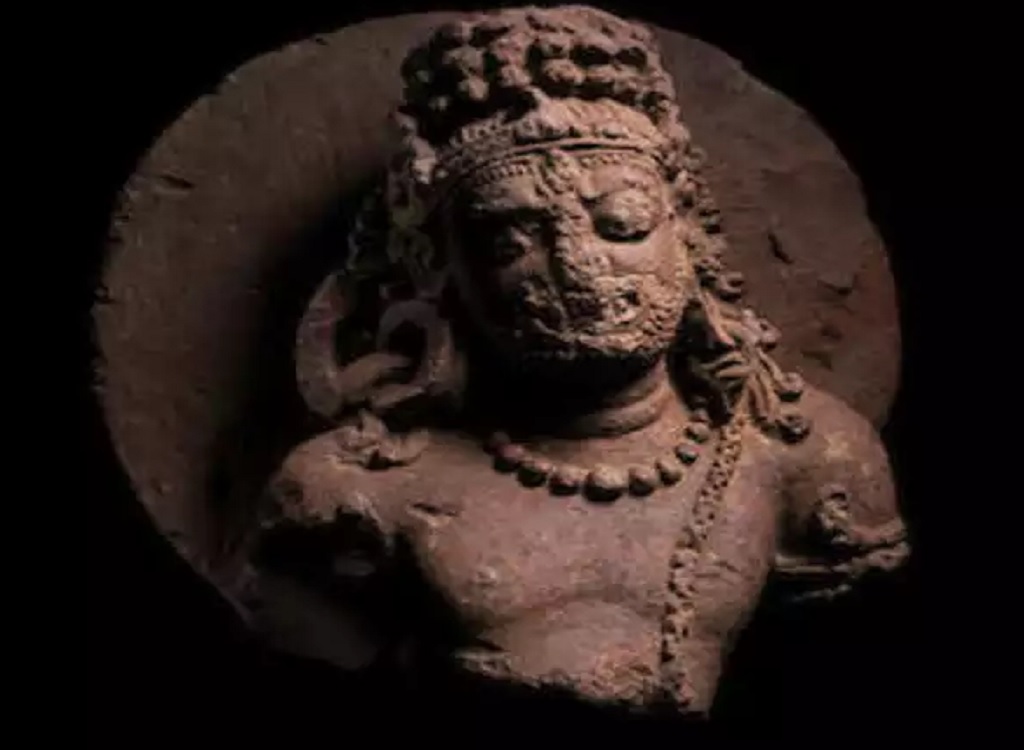India’s visual arts down the centuries have been defined and described as workmanship of exquisite quality. Besides, being appreciated they have been fetching whopping value during auctions.
One such event that is currently on is the Asia Week in New York. It is organised by United Kingdom-based Bonhams, one of the world’s largest auction houses. On this occasion some of the finest paintings, idols and sculptures from India and South East Asia – many of them centuries old — will go under hammer.
Here are works being auctioned.
A sandstone bust of a Tantric deity
This sandstone sculpture from the Odisha is dated to either 8th or 9th Century depicts Tantric deity.
The practice of sculpting in stone into objects of utility and art is an ancient practice in Odisha. Prevalent in Puri, Bhubaneswar and Lalitgiri some carvings can be found in Mayurbhanj district’s Khiching too.
Among the material used for sculpture were sandstone, soapstone, Serpentinite, Makrana marble, and granite.
Tantrism, a pan-Indian movement started by the fifth and sixth Centuries AD, was a response to the prevailing contradictions in the Vedic religion at that time. Heterodox in nature, it revolved around the Great Goddess, Devi, who is treated as the divine mother and the supreme deity. The texts pertaining to Tantrism assert that only she is capable of granting the dual aims of mukti and bhukti.
Called as the Devī Māhātmya, the Goddess Devi, she is eternal, has supreme knowledge and the can grant the boon of final liberation. As the universe’s sole and absolute creative force, she also sometimes is identified as shakti (power). As source of all, she is dynamic, manifests energy of creation while the male god is static.
The auction price for the piece is $4000-6000.
The copper figures of Vishnu, Vaishnavi and a Rishi in miniature
The three miniature figures representing Vishnu, Vaishnavi and a Rishi date back to the 10th or 11th Century are from the Pala Empire. Spread over regions of Bihar and Bengal, the Pala dynasty ruled for 400 years and its rulers were followers of the Mahayana and Tantric schools of Buddhism.

The copper figures of Vishnu, Vaishnavi and a Rishi in miniature (Pic: Courtesy Bonhams.com)
Recognised as a distinct phase, the Pala school of sculptural art is noted for the artistic genius of the Bengal sculptors. Influenced by the Gupta art, it continued to develop under the Sena Empire.
The sculpture style changed from post-Gupta to a distinctive style. The deity figures became more rigid in posture, often standing with straight legs close together, and figures were often heavily loaded with jewellery. Besides the figures had multiple arms, to allow them to hold many attributes and display mudras. The carving quality is crisp and has precise detailing.
The auction price is $10,000-15,000
Ganesha figure in copper alloy
Originating in Himachal Pradesh from the 11th Century, this Lord Ganesha is copper figure. Writing about then figure the Indian scholar of Southeast

Ganesha figure in copper alloy (Pic: Courtesy Bonhams.com)
Pratapaditya Pal, an Indian scholar of Southeast Asian and Himalayan art and cultures says: “A small but charming bronze…may well be from the Western Himalaya and reflects the Pratihara style. Framed by a simple arch [Ganesha] stands in the posture of a resting dancer with his right foot in kunchita pose with the heel raised.”
The Pratihara style of architecture is known for their sculptures, carved panels and open pavilion style temples belonging to Nagara Style of temple Architecture. Common standstones were used for idols in various shades of red, caused by iron oxide (rust).
The auction price is $6000-8000
Todi Ragini: An illustration to a Ragamala Series
A part of the Ragamala series, this work is illustrated with opaque watercolours and gold on paper. The artwork is from the late 18th Century from Faizabad or Delhi. The Ragamala paintings denote the musical notes or ragas, and they are personified with a hero and his wife (raginis).

Todi Ragini: An illustration to a Ragamala Series (Pic: Courtesy Bonhams.com)
A form of Indian miniature painting, Ragamala paintings are a set of illustrative paintings of the Ragamala or "Garland of Ragas". They depict variations of the Indian musical modes called ragas. They stand as a classical example of the amalgamation of art, poetry and classical music in medieval India.
Created in most schools of Indian painting, starting in the 16th and 17th centuries, the Ragamala series are today named accordingly as Pahari Ragamala, Rajasthan or Rajput Ragamala, Deccan Ragamala, and Mughal Ragamala.
According to the Harvard Museum, “Todi Ragini evokes both tenderness and sadness, and is commonly represented by a young heroine (nayika) in a forest separated from her lover.”
The auction price is $5000-7000




















